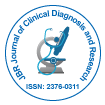Research Article
Effect of Biofield Treatment on Antimicrobials Susceptibility Pattern of Acinetobacter baumannii - An Experimental Study
Mahendra Kumar Trivedi1, Shrikant Patil1, Harish Shettigar1, Mayank Gangwar2 and Snehasis Jana2*
1Trivedi Global Inc., 10624 S Eastern Avenue Suite A-969, Henderson, NV 89052, USA.
2Trivedi Science Research Laboratory Pvt. Ltd., Hall-A, Chinar Mega Mall, Chinar Fortune City, Hoshangabad Rd., Bhopal- 462026, Madhya Pradesh, India
- Corresponding Author:
- Jana S
Trivedi Science Research Laboratory Pvt. Ltd.
Hall-A, Chinar Mega Mall, Chinar Fortune City
Hoshangabad Rd., Bhopal- 462026
Madhya Pradesh, India
Tel: 917556660006
E-mail: publication@trivedisrl.com
Received Date: July 03, 2015; Accepted Date: July 21, 2015; Published Date: July 23, 2015
Citation: Trivedi MK, Patil S, Shettigar H, Gangwar M, Jana S (2015) Effect of Biofield Treatment on Antimicrobials Susceptibility Pattern of Acinetobacter baumannii - An Experimental Study. J Clin Diagn Res 3:117. doi:10.4172/2376-0311.1000117
Copyright: © 2015 Trivedi MK, et al. This is an open-access article distributed under the terms of the Creative Commons Attribution License, which permits unrestricted use, distribution, and reproduction in any medium, provided the original author and source are credited.
Abstract
Global emergence of Acinetobacter baumannii (A. baumannii) displays a mechanism of resistance to all existing antimicrobials. Objective of this study was to investigate the effect of biofield treatment on antimicrobial sensitivity pattern, minimum inhibitory concentration (MIC), biochemical reactions and biotype number of A. baumannii. A. baumannii cells were procured from MicroBioLogics in sealed packs bearing the American Type Culture Collection (ATCC 19606) number and stored according to the recommended storage protocols until needed for experiments. Two sets of ATCC samples were taken in this experiment and denoted as A and B. ATCC-A sample was revived and divided into two parts i.e. Gr.I (control) and Gr.II (revived) analyzed on day 5 and 10, respectively; likewise, ATCC-B was labeled as Gr.III (lyophilized) and was assessed on day 10. Gr.II and III were treated with Mr. Trivedi’s biofield and were analyzed for its antimicrobial sensitivity, MIC value, biochemical reactions and biotype number with respect to control. Experimental results showed the impact of biofield treatment directly onto the revived and lyophilized form of A. baumannii and found alteration both in qualitative and quantitative aspect as compared with untreated groups. These results showed altered sensitivity pattern of antimicrobials in biofield treated group as compared to control. Apart from altered MIC values, changes were also observed in biotype number of revived treated group as compared to control. These findings suggest that biofield treatment can prevent the emergence of absolute resistance of existing antimicrobials to A. baumannii.

 Spanish
Spanish  Chinese
Chinese  Russian
Russian  German
German  French
French  Japanese
Japanese  Portuguese
Portuguese  Hindi
Hindi